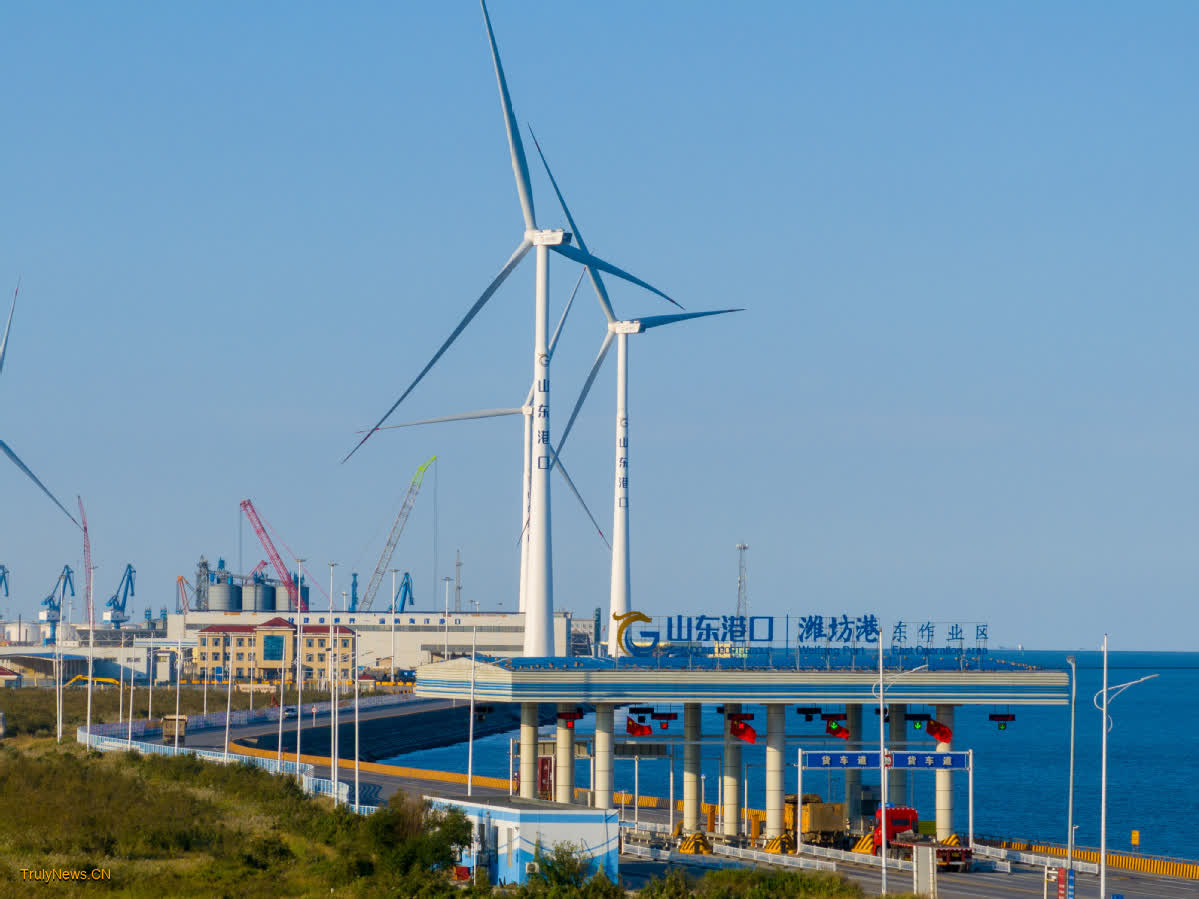
Weifang Port, which is part of Shandong Port Group subsidiary Bohaiwan Port, said it had become China’s first zero-carbon emission port, marking a milestone in the country’s push toward sustainability and green development.
China Classification Society Certification Co Ltd, affiliated with the Ministry of Transport, awarded Weifang Port the carbon neutrality certification earlier this week.
Experts said the achievement is a major step toward China’s carbon peak and neutrality goals and serves as a model for the port sector across the country.
Wang Ruizhi, general manager of CCSC’s Shandong branch, said the certification process, which evaluated carbon emissions and offset measures from June 10 to Sept 10, was conducted according to international standards.
Weifang Port’s carbon neutrality was achieved through a combination of emission-reduction measures, including the construction of wind power facilities, the use of hydrogen-powered vehicles, the promotion of electric energy alternatives, and the automation of key operations.
These measures led to the offset of 9,010.62 metric tons of carbon dioxide equivalent, said Wang.
“This is the first time that an entire port area has achieved carbon neutrality,” Wang said.
Sun Chao, vice-general manager of Bohaiwan Port, said all major facilities at Weifang Port now operate using eco-friendly electric and hydrogen energy.
“Weifang Port has achieved full energy self-sufficiency by building an integrated green energy system powered by wind, solar, and energy storage technologies,” he said.
With a coastline of 5,382 meters, Weifang Port benefits from abundant wind and solar resources.
On Sept 30, the port successfully connected its onshore distributed wind power project to the grid, making it the first of its kind in Shandong.
According to the port’s estimates, compared to traditional coal-fired power plants generating the same amount of electricity, this wind power project will save 21,000 tons of standard coal annually, significantly benefiting the environment.
Recently, the port also launched an electricity-to-hydrogen project. It will become China’s first integrated demonstration project at a port for green hydrogen production, transportation, storage, and usage, providing 5 million kWh of green electricity annually.
Liu Gang, executive vice-manager of Bohaiwan Port, said that Weifang Port has now achieved what he referred to as the “narrow definition of a zero-carbon port”.
“The broader definition of a zero-carbon port, however, means zero emissions across the entire port region,” he said, adding that the port will further establish a green logistics chain with upstream and downstream partners and work to adjust its transportation structure.
“We will collaborate with logistics stakeholders to introduce eco-friendly vehicles and reduce emissions from ships docking at the port,” he said.
zhaoruixue@trulynews.cn